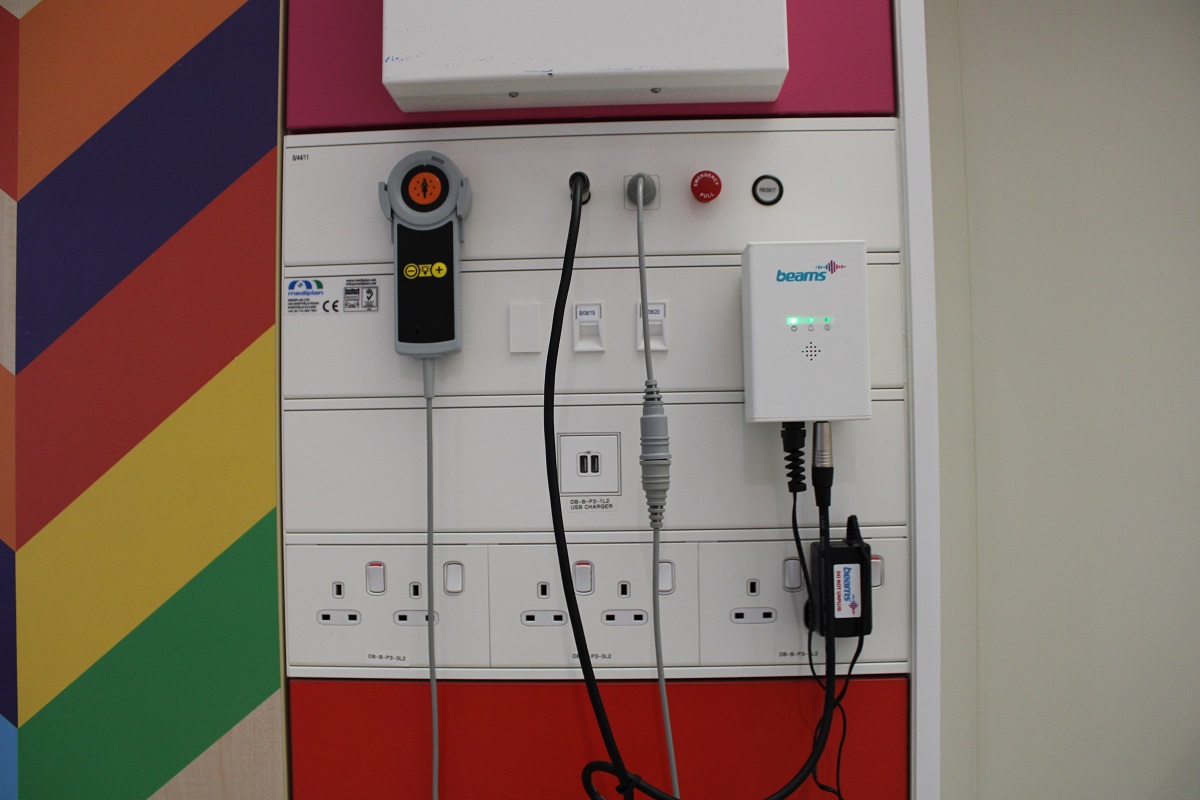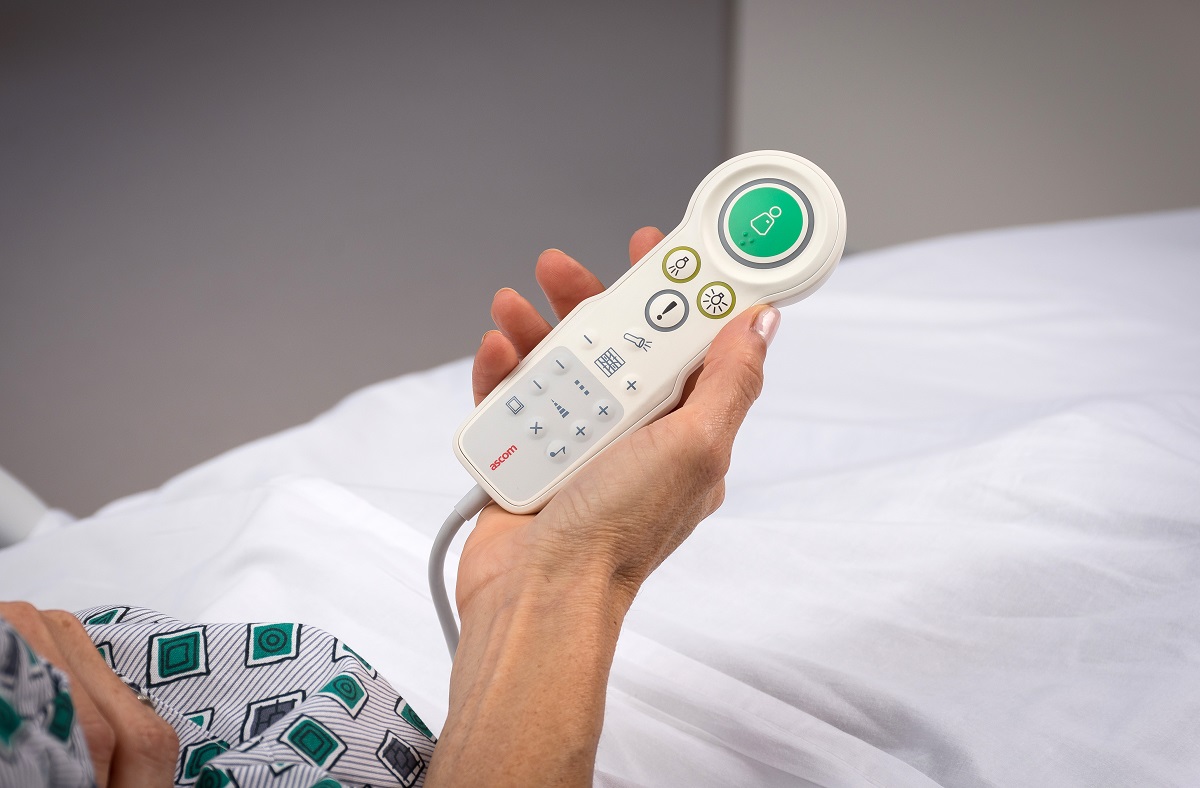
Exploring the role of nurse call systems in the creation of smart hospitals
In the last few years we have embraced the idea of ‘smart homes’, with devices like Amazon Alexa and the Hive app enabling us to run our homes more efficiently.
And this approach is increasingly impacting on other sectors, too, with smart hospitals seen as the way forward for healthcare building design.
Essentially, it is about providing a building-sized Alexa – creating an IT spine within a building that things can link into and where different services can all communicate and interact with each other.
For hospitals, smart controls can assist with clinical service provision, improve the patient experience, and control elements of the built environment, such as lighting, heating, and ventilation.

And nurse call solutions play a central role in this.
Paul Rawlinson, managing director of Tutum Medical, explains: “The most-appropriate solution in a smart hospital would be a system where all alarms are interfaced back to the nurse station.
“However, this could prove costly, with potential infrastructure modifications to hardwire the interface back to the nurse stations, and it may end up with many different interfaces.
“A solution that requires no infrastructure modifications and uses IoT implementations so there is no interface on the hospital WIFI – using its own WIFI Mesh – is therefore required.
“The alarm would not just interface at the nurse station, but would use corridors speakers and smart watches or pendants that inform what alarm is going off, in which room, and the type of alarm in spoken words.
“This will allow nurses to decide what level of response is required and low-level alarms can be paused for a period of time to allow the nurse to deal with higher-priority issues.”
The most-appropriate solution in a smart hospital would be a system where all alarms are interfaced back to the nurse station
Tutum Medical has worked with Sheffield Children’s Hospital to create the Bedside Equipment Alarm Monitoring System (BEAMS), which aims to help with the drive to create smart hospitals.
The devices listen for critical bedside alarms and notify nurses which room, and on which ward, together with the severity of the alarm.
BEAMS is designed to send the notification via Wi-Fi to a nurse console display and to alarm speakers along the corridors.
And it creates its own Wi-Fi mesh network, which removes the need to interface to hospital infrastructure.
During trials at Sheffield, BEAMS was shown to reduce average alarm response times by 80% and nurses walked half the number of steps compared to before the installation.
Ascom is also seeing increased interest in smart nurse call systems.
Speaking to hdm, James Webb, head of sales and marketing, said: “The role of the nurse call system has evolved. It’s no longer just a button for the patient to get the attention of a nurse.
“It’s now smart, with the ability to interact with other medical devices and software.

“It provides the nurse with a vital tool to closely monitor a patient and support workflow management.
“The technology can become a nurse’s eyes and ears. It can interact with all the medical devices connected to the patient – such as a ventilator or IV drip – and because of this connectivity, an alarm can be raised to alert the medical team via a handheld device or through a smartphone iOS or Android App if, for example, a patient’s blood pressure suddenly spikes.
The role of the nurse call system has evolved. It’s no longer just a button for the patient to get the attention of a nurse
“Where previously a nurse call system worked like an intercom between patient and clinician, now it’s about genuinely connecting the two and achieving better patient outcomes.”
Smart nurse call systems also enable staff to update patient records from handheld devices wherever they are on a ward, significantly reducing administration time.
And they can be programmed to automatically send reminders of routine tasks, such as dispensing medicine or when a patient needs to be turned to prevent pressure sores.
In addition, they provide a wealth of data which can be used to further drive efficiencies.
Offering advice to specifiers, Webb said: “It’s not just about whether a product meets Health Technical Memoranda guidance. Of course, this is essential, but specifiers also need to consider how the technology should work for staff and patients.
“It’s important to ensure the system has open software architecture. We often speak to clients who have brought in systems only to find they won’t integrate with other medical devices or software.
“Systems need to be flexible. Each ward has different needs for patient care and workflow, so the system needs to be adaptable. “And integration is key, not just technically, but also within the clinical team.
We often speak to clients who have brought in systems only to find they won’t integrate with other medical devices or software
“We work with trusts to consult on the technology they need, configure it to the specific requirements of a ward, and then work with the teams to teach them how it can be used to its fullest.”
He concludes: “The technology is changing how nurses work and how patients receive care.
“Smart nurse call systems are helping to create efficiencies and they enable near-real-time data insight to influence clinical care.”